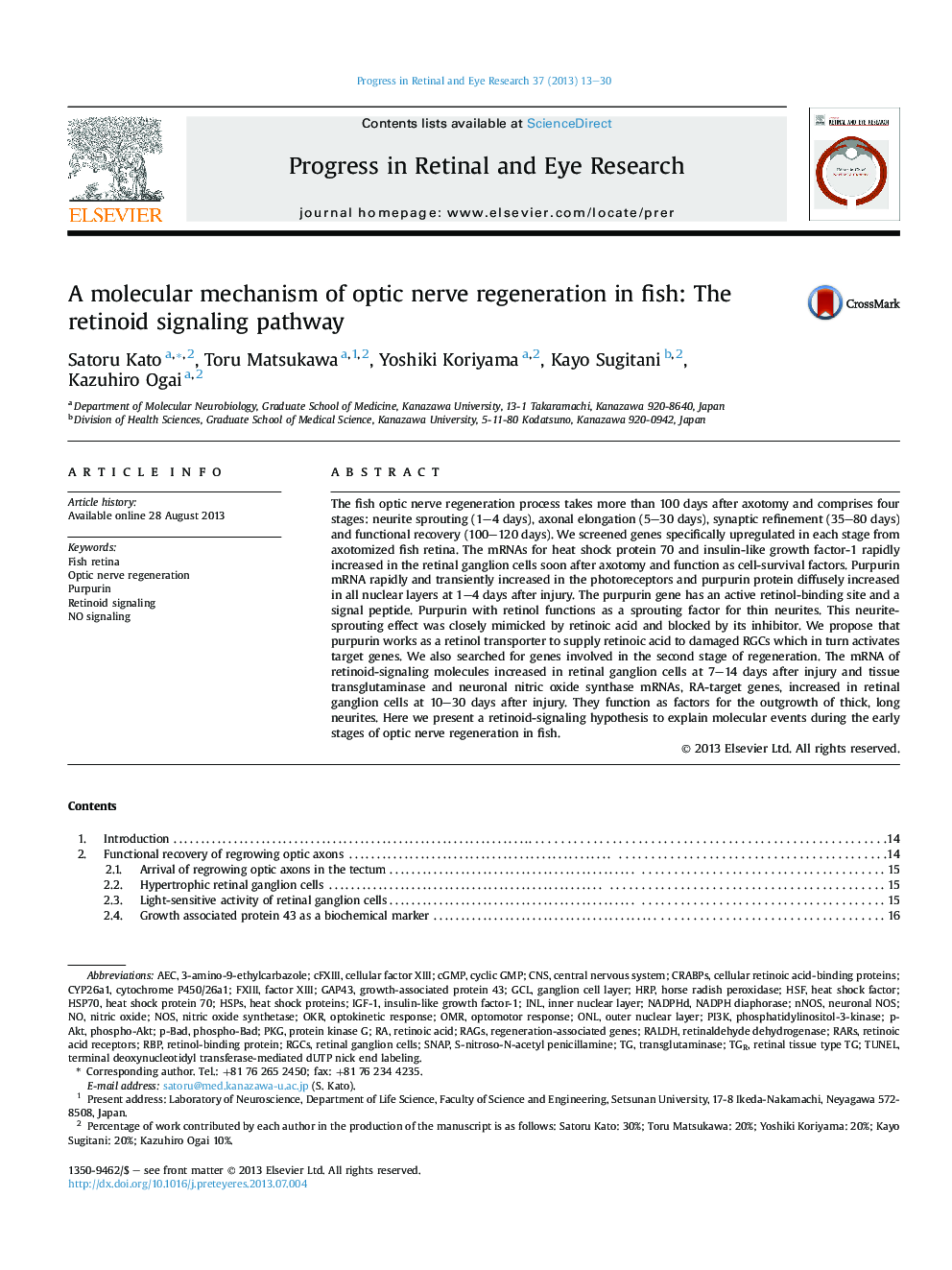| کد مقاله | کد نشریه | سال انتشار | مقاله انگلیسی | نسخه تمام متن |
|---|---|---|---|---|
| 6202736 | 1602829 | 2013 | 18 صفحه PDF | دانلود رایگان |
- Many genes are involved in the fish optic nerve regeneration processes.
- A retinol-binding protein, purpurin was induced in the retina during the early stage.
- Retinoic acid (RA) signaling molecules were then increased in the damaged retina.
- RA-target genes such as tissue TG and nNOS were induced thereafter in the retina.
- The RA signaling pathway can explain the early stage of regeneration process.
The fish optic nerve regeneration process takes more than 100 days after axotomy and comprises four stages: neurite sprouting (1-4 days), axonal elongation (5-30 days), synaptic refinement (35-80 days) and functional recovery (100-120 days). We screened genes specifically upregulated in each stage from axotomized fish retina. The mRNAs for heat shock protein 70 and insulin-like growth factor-1 rapidly increased in the retinal ganglion cells soon after axotomy and function as cell-survival factors. Purpurin mRNA rapidly and transiently increased in the photoreceptors and purpurin protein diffusely increased in all nuclear layers at 1-4 days after injury. The purpurin gene has an active retinol-binding site and a signal peptide. Purpurin with retinol functions as a sprouting factor for thin neurites. This neurite-sprouting effect was closely mimicked by retinoic acid and blocked by its inhibitor. We propose that purpurin works as a retinol transporter to supply retinoic acid to damaged RGCs which in turn activates target genes. We also searched for genes involved in the second stage of regeneration. The mRNA of retinoid-signaling molecules increased in retinal ganglion cells at 7-14 days after injury and tissue transglutaminase and neuronal nitric oxide synthase mRNAs, RA-target genes, increased in retinal ganglion cells at 10-30 days after injury. They function as factors for the outgrowth of thick, long neurites. Here we present a retinoid-signaling hypothesis to explain molecular events during the early stages of optic nerve regeneration in fish.
Journal: Progress in Retinal and Eye Research - Volume 37, November 2013, Pages 13-30
